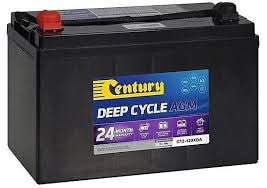|
Whether you are looking to park up your RV for the whole winter or just for an extended period when you are unable to use it, we have put together this simple guide and checklist to help you with the process.  Batteries Battery life will depend on how you use and maintain your system
Tip: If the vehicle remains immobilised for a long period, regularly check the battery charge and recharge when necessary. How to recharge? To recharge the battery, connect the vehicle to the 230 V mains supply for 24 to 48 hours. Charging times may vary depending on how flat the battery is, should the battery be almost dead flat, charge times could be up to 48 hours.
Tip: Make sure you check if the battery charger is a constant voltage charger or a smart charger! Smart Charger – once the battery is fully charged the system automatically shuts down and charging stops. Constant Voltage Charge – will continue to charge the battery at 13.5V until the 240 V power is disconnected. Should you leave the 240V power plugged in for extended periods of time with no draw coming off the battery you will damage the battery.
Please follow the instructions below when operating gas
Should you have activated the pressure sensitive ball bearing, you will need to turn off the gas bottle, turn off all components and wait five minutes. Then slowly turn the gas bottle back on. Some operating systems and components may need resetting. You will need to refer to your manuals or contact your supplier for assistance.
Tip: Remember to refill the fresh water tank with good water to 1/4 - 1/2 full after following the instructions above. Grey Water Tank There are several products designed to assist with cleaning grey water tanks and water pipes. We recommend to use a product called Elemonate. You simply place one Elemonate tablet over each plug hole in your RV and run the tap until the tablet is dissolved. Ensure the grey water tank remains full for est. 20 minutes prior to emptying it. Tip: Toilet Chemical, Bleach or Baking Soda can also be used as an alternative. Please note depending on where you are discharging your grey water you may need to be mindful of the products you use. Toilet If you have a flush water holding tank, ensure you never run the tank dry. Ensure you are using a toilet chemical suitable for flush tanks to assist in keeping your pump lubricated. Tip: Aqua Chem Pink is a good product for this purpose.
Cassette and Toilet maintenance Ensure you lubricate the seal on the underside of the toilet bowl.
Tip: you need a silicone grease for the application.
Tip: Rubber gloves are recommended for this job. Whilst in storage, we recommend leaving the blade open to prevent damage to the blade and to loosen the cap of the pour out spout, which will ventilate the waste-holding tank. By leaving the blade open, you prevent the blade seal from drying out. Boiler/Water Heater
Depending on your system you may have a quick release valve as part of the boiler set up. If you do, it is essential, you check the valve prior to lighting your boiler for testing or your first time bringing the RV out of hibernation. Check valve is in correct position. Tip: If the valve has activated during hibernation mode and the hot water cylinder is empty, turn the valve back into place and set. Turn the tap to hot and turn it on. This will ensure the hot water tank starts to refill. Once the water runs freely you know the cylinder is full and you are able to turn the boiler on. If the boiler has not been running for several weeks or months you may need to try lighting it multiple times before it will light. Do not panic this will be down to the fact there is a lack of gas in the line. Exterior
Comments are closed.
|
AuthorDeluxe RV Group Archives
July 2024
Newsletters
|
Location45 Main Street, Blenheim,
New Zealand Opening HoursMonday - Friday: 8.00am - 5.30pm
Saturday: 9.00am - 4.00pm Other times by Appointment only Ph: 03 927 2216 |
Telephone03 927 2216
|
Dedicated Property Website |
Copyright ©
DELUXE RV Group. All Rights Reserved






 RSS Feed
RSS Feed




